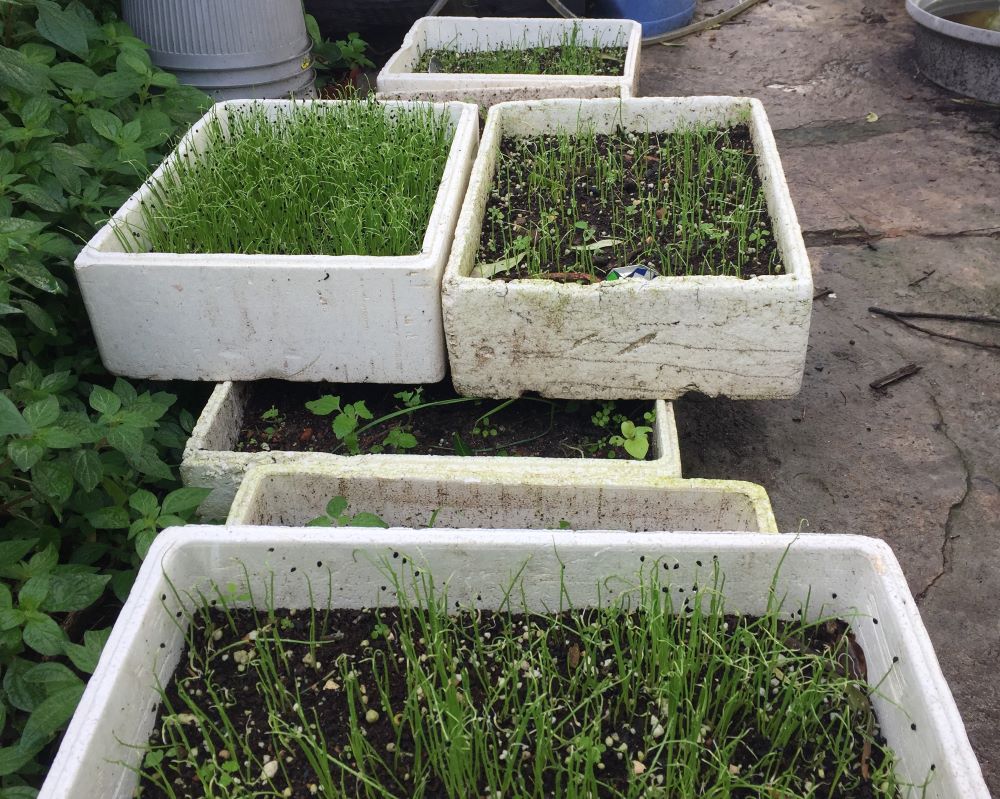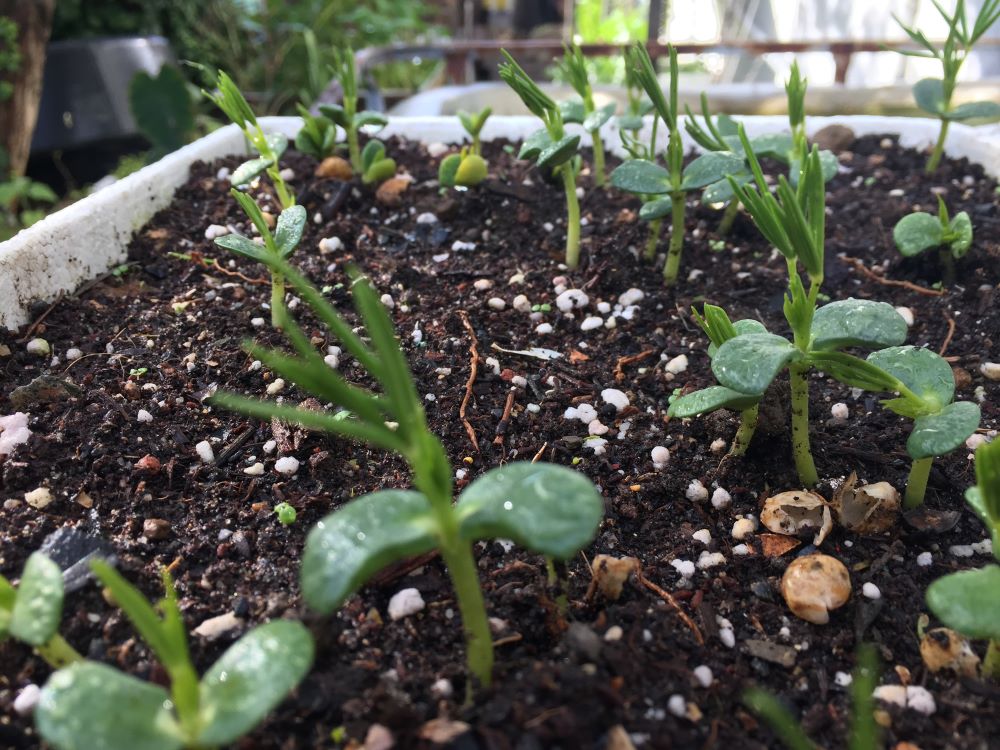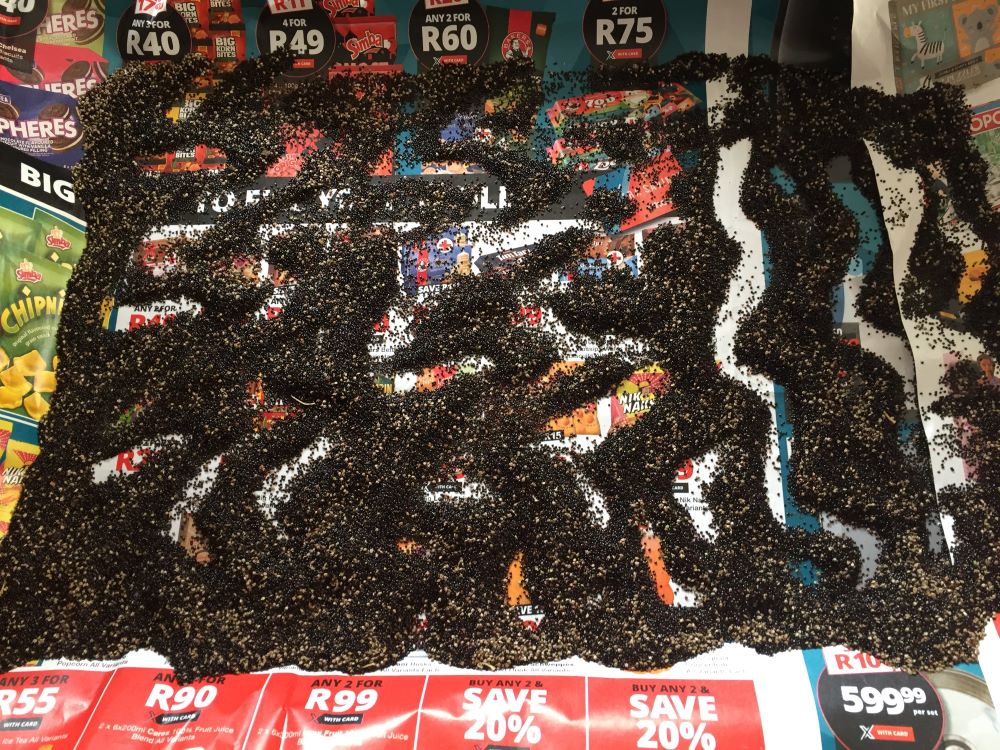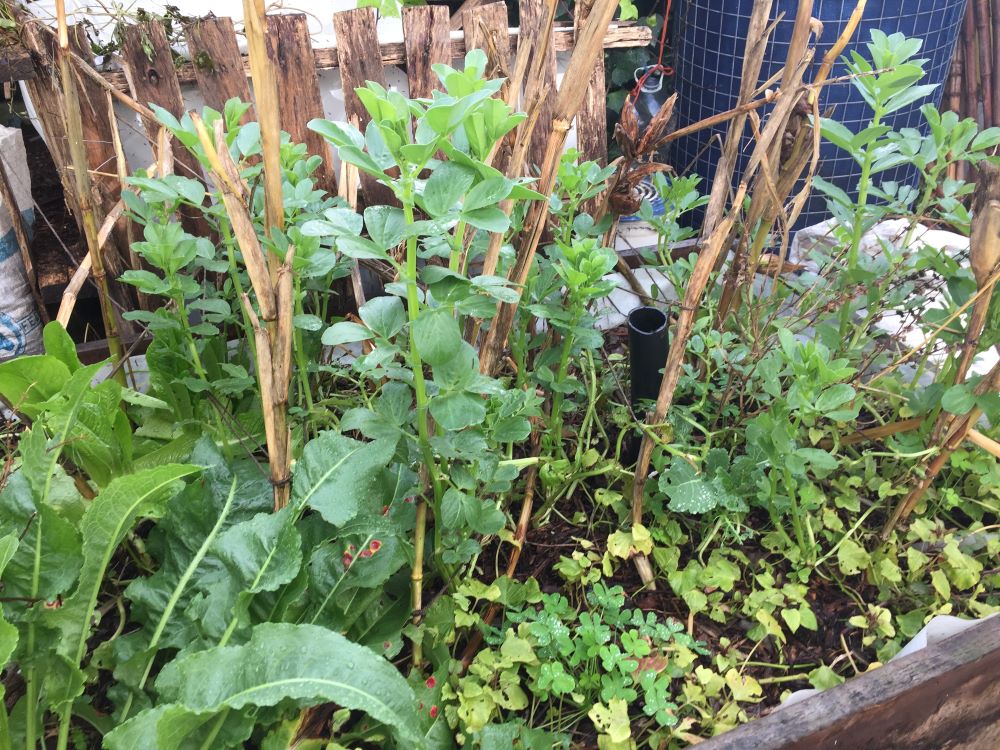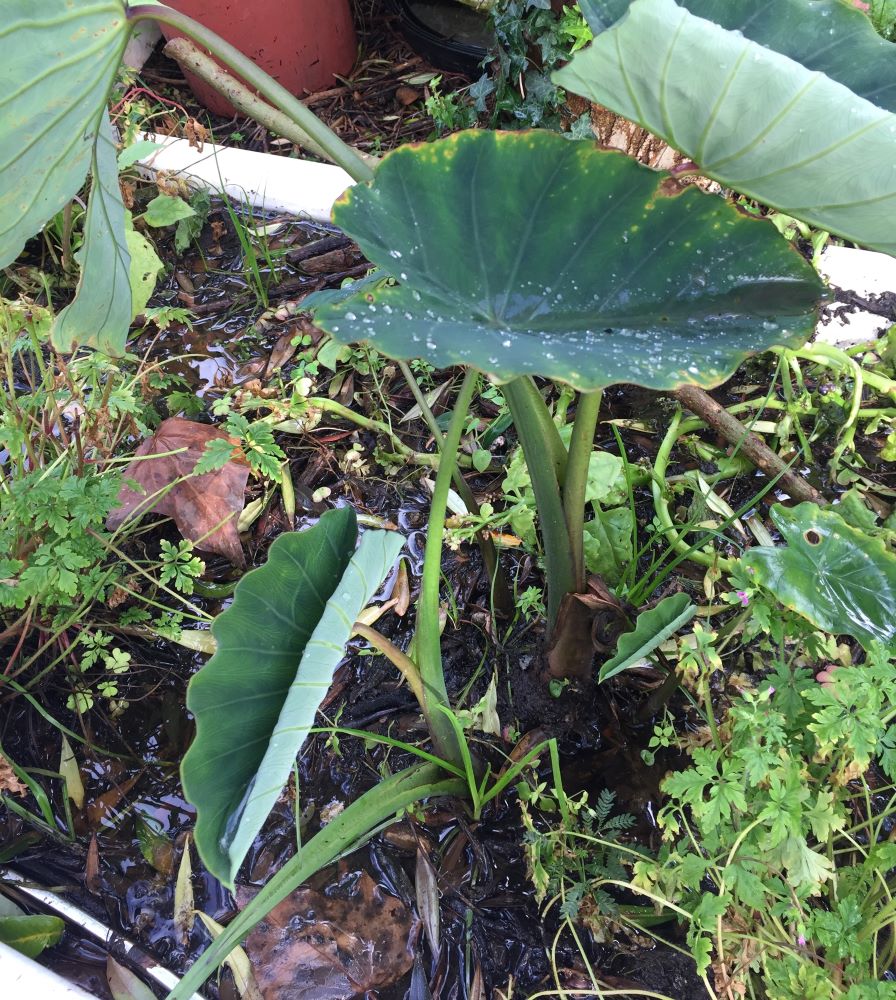| Back to Back Issues Page |
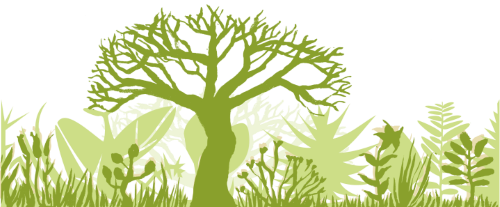 |
|
Restore Nature, Issue #005 -- Strange plants surviving in the winter July 10, 2023 |
HelloRESTORE NATUREPlants that surprisingly love dank conditions. What has become of my winter sowing a few months back ?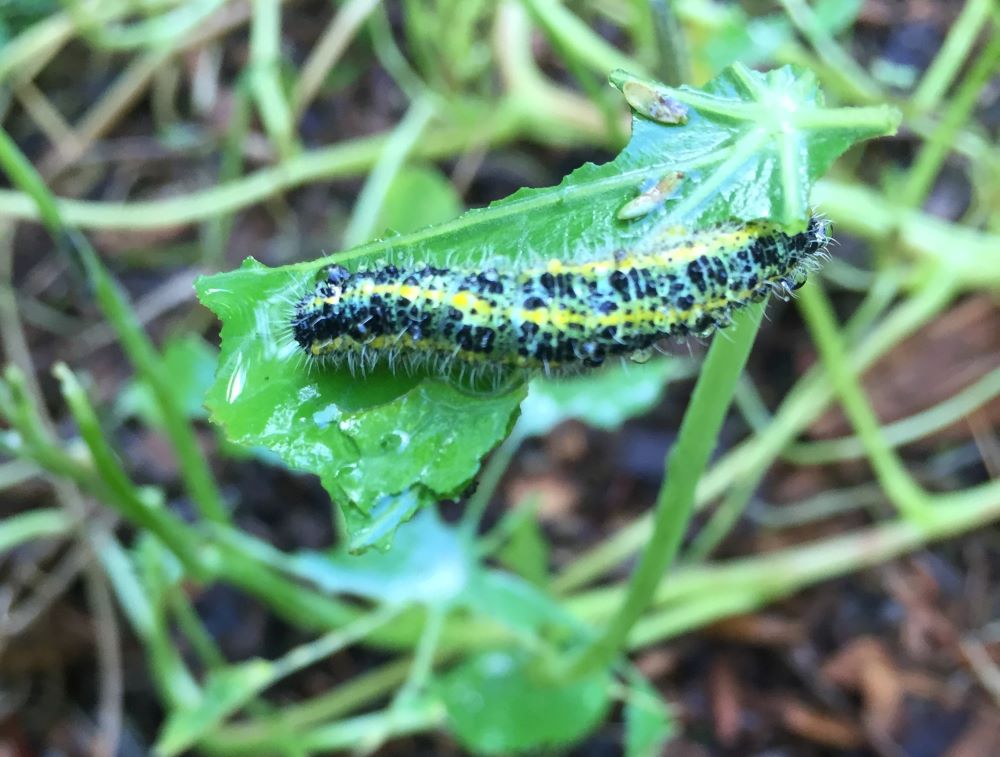
On the dark subject of winter... please let me know where I should search for light that will help us allFellow gardener...another story coming from the wild garden and pro biology urban homestead blogger. In this issue I’m asking for your ideas, as I'd like to know from subscribers what sort of topics they would like me to research on and write up. I'd really love to keep you amused (though I hope my gardening ‘practice’ is not too hilarious) and it would be nice if you feel what you read is useful to you. As you have been so kind as to subscribe, I’d like to return a favor by helping you save time hunting for information on both your favorite and unfavorite issues in the garden. I want to go in a direction that is relevant. It makes messianic evangelism on nutrition-wildlife-planet-saving gardening or Gardening for Life more effective. Please leave me a note, even one word, in the messaging system supplied below every article on my website https://www.greenidiom.com. I will be reading all your suggestions, and responding. In the meantime I’ll give you an update on what is working in the winter garden, as its useful information for any gardener locally, in Mediterranean zones or any place with a rainy or cold times of year that nonetheless has an extended or year round growing season. Up to now, the articles have foregrounded native and exotic vegetables most people in South Africa may never have tasted. But at home the lover of unusual food will always be sent off if she threatens to upstage the living biology, the insects and birds in this little wildlife jungle I dare to call a garden. You may want to see current progress and which of the winter veggies are thriving. As we go, I will also explain some of the many purposes each planting serves. Multifunctionality is not only built into permaculture design, it is a necessity for city living, which is short on space and time, but long on intimacy, the mutual gardener-garden relationship with its very high people to area ratio. Back to the story: It was the darkest day of winter and heavy clouds loomed over the landscape as cold needles of rain left shards of brilliants on the every bent leaf. A flash tore through the fabric of the sky followed seconds later by rolling thunder that shook the very foundations, and a figure came forth, parting the deep green foliage, cursing as the plants sprang back from her passing and shed their load down her shirt collar... Jokes aside, we are now in the middle of the southern hemisphere winter at the Cape. The winter solstice on 21st of June is past, and the damp and bone chilling cold are setting in. This winter has been exceptionally wet. Yesterday had the darkest daytime sky I’ve seen in decades. It also soon became dark within ! A clap of thunder and whoosh of fierce wind took out our electricity supply ! Fortunately the City of Cape Town electrical department’s technical support were there within two hours with a crane and two cheery engineers and reconnected us ! ..and no.. they are not paying me to say this. Not all in South Africa’s energy scene is as dank and gloomy as a snow cloud. But what impact has the cold on our photosynthesizing Sistren (yes that word exists). When the winter sowing was done I posted an article in the Garden for Life blog and here in the newsletter I will feature some of the annuals and perennials that have survived. You may be surprised. This time of year may complexify planting but it is a wonderful blessing to all who garden with year round growing seasons. It has been raining several times a week for the last two months and the temperatures have been between 48 and 70 Fahrenheit or 8.9 to 21 Celcius according to meteorological archives.
Four kinds of onions should beat the odds ?
I mentioned a twice yearly sowing regimen in the last letter, but I’ve just had to add to that. I recently sowed pigeon peas and onions and they are just emerging, whereas the other winter vegetables are well established. Cape Town falls between long day and short day onion varieties in South Africa. We are pretty much the furthest south you can get in Africa, so true long day onions may not work here. I did some research on which varieties to sow in Cape Town and went to two common gardening outlets. Much to my surprise they didn’t stock the varieties that online research recommended. To improve success (hopefully) I over-sowed. If all my onion seedlings grew to maturity I’d be able to feed the northern suburbs... you can never have too many onions in the garden... right or not ? I also chose four varieties. Australian Brown and Hojem were recommended. I added the short day varieties Red Creole and Texas Grano as google said they could succeed in Cape Town. Texas Grano came up first, like hairs on a dog’s back, Hojem did well, Red Creole emerged more thinly and Australian Brown took a while, but I did sow them slightly later when it was colder. I’m growing them in trays this year and I’ve never done this before. I’ve also never succeeded at growing alliums though I love them. I saw that Sileo Oliviera of the wonderfully informative, well researched and aesthetically top class Suburban Homestead youtube channel sometimes sows onions this way and it made so much sense. They are growing densely compared to those sown in six-packs or direct and I’ll have to feed them well to boost later bulb initiation. I’ve bubbling brews of bone-meal kelp, ash and stone minerals with molasses and some weeds in the mix. I don’t know if it will work. The intention is that when they are 6 inches in height the onion slips will be planted out in the garden and fed mainly nitrogen rich organics in the beginning, which could change to mineral rich feed at bulb initiation, but if they get that far I’ll be doing more reading.
Toovar dal or pigeon peasI learned about pigeon peas and their use in polyculture while illustrating three books on agroecology in 2022. The thought of there being a food forest support plant, an edible, nitrogen fixing plant in the form of a tree I found exciting. It is identical to Toovar dal, which is delicious. My first strategy was to go to local Asian supply stores but they all had processed toovar and none had whole viable seeds. The plant is apparently native to southern Asia but has been growing in Africa so long that African farmers have developed our own unique varieties. Unfortunately the seed company from which I ordered them didn’t elaborate on the origin of the variety in their catalog. If they grow well it will be the time to find out more, and so far it looks promising. I’ve so many plants that I’ll be able to sell or donate some to local food garden networks. These seeds germinated outside in a tray, after being soaked indoors in a jar till they began to sprout. Of course I changed the water and rinsed them daily. After planting them outside in soil they seem to have been slightly ‘shocked’. They took a good few weeks to emerge.
Yes its chitting !This week I started chitting potatoes. I love this old English terminology. Basically I’m also cheating with the chitting. I can't afford seed potatoes so I'm taking small potatoes which look a bit green and laying them out on trays. Last year I put them outside, sheltered from the rain, but most of them rotted and the foliage turnout was bad. This year I’m putting them on trays in my room where its warm, dry and bright, but out of direct sun. I’m trying some in the dark of my mother’s old pantry, and some on a brightly lit windowsill to compare results. I bought three kinds of commercial potatoes. I hope they have not been irradiated. To truly test the chitting locales I should mix them up actually. A few from each source in each location. I’ll do that this coming week.
Morog seedsAfter that I harvested the massive African amaranth or Morog plants and put the seeds to dry on newspaper. Harvesting the seeds is cumbersome. Youtubers mention their own ways of doing it and none are really effective. So many seeds are left behind if you just tickle the heads. True, you can use the rest to attract and feed birds, but one would like more seed for all the trouble it involves. I’ve seen Amish women flailing the harvested seed heads with dangerous looking cudgels connected by chains. They would be experienced and effective at hand done methods. The ancient South American way of doing it should be similarly sensible. I tried to puzzle out what was being done watching a video, though the focus was not on method, but on cultural restoration. The heads are wrapped in cloth and pounded. A fine sieve then does most of the work of separation. Pouring the seed bowl to bowl in a slight breeze then cleans it up. I tried putting mine in a jar. The seed and chaff separated well but I couldn’t get the chaff out of the jar. Using a bicycle pump didn’t work. I blew into the jar and it fogged up and the seeds stuck to the sides. In the end I did it by rubbing the heads between my hands till the hiss of falling seed abated. Then I sieved and then poured bowl to bowl outside. Gentle blowing was very effective but a lot of seeds may be lost this way. I did the blowing in a patch of the front garden where I want the amaranth to grow next year. It must not grow at the back where my dogs run. Amaranth is toxic to dogs and I suspect my puppy has sampled it and taken ill. Once when I fed her amaranth cooked in her food by accident, she came up in terrible hives that made her look like a gargoyle. I had to rush her to the all night vet as hives can be lethal if the airways get blocked. The hives also itch like crazy and they can rub the skin off trying to scratch it. The harvested heads were left in the front garden for the birds to pick over, and some were also left on the decapitated bushes.
kale and other greens, trouble and lifeIn the previous letter you saw my grey water system being enjoyed by Romaine lettuce, and the beds full of new kale.The kale is still looking good. The seed company said it was curly kale but I beg to differ. The savoy cabbage germinated well and then slowly died off. I don’t know why. The last plant is besieged by black aphids and all kinds of rusts. The peas grew to about 6 inches and then slowly just disappeared too. Perhaps its my pro biology stance which is at fault. The Romaine lettuce is looking great in the front garden and the grey water grow beds. Last year’s old chard and some Mizuna mustard are doing ok. I like the look of the chard leaves in the second year, they go dark and glossy and heart shaped. The broccoli microgreens were great. I’ve harvested about five times from them and they are still growing. They are enjoyed by my mother who can whip them up in a smoothie for a nutritional boost. The caterpillars have decimated some self seeded nasturtiums, leaving scattered leaves and bare stalks. If it is cabbage white, which I must check with the platform iNaturalist, I’m so glad I’ve attracted them away from my kale. There is still plenty of nasturtium vine around to keep doing this. Using nasturtiums as as a trap crop for cabbage whites to keep them off the brassicas is an old permaculture technique. The cabbage white is an alien invader, but I also rejoice at its presence as the larvae will provide a food source for nesting birds in my garden and there are plenty of birds thinking about nesting. The masked weaver is building his pear shaped nests. His artistry is so impressive, how did pear shaped ever become a metaphor for failure ? We’ve three young red bishop males at the bird feeder lately. Mom watches the birds from her bed with binoculars and keeps us informed of their comings and goings. We’ve some other common birds: the mossie or Cape sparrow, doves and pigeons, and away from the feeder: white eyes gathering ants, mouse birds on our fruit and sunbirds coming for the red tubular blooms like African hibiscus, Chasmanthe, and later they will visit the Aloes too.
Mystery plant and broad beansThe mystery plant is booming. I am not sure if its a horse radish or one of the local invasive weeds in swampy areas, a kind of sorrel. Perhaps someone knows the answer. I crushed the leaf and smelled it and it was faintly mustardy. You can see it in the bottom left of the broad bean with millies picture below.The broad beans are also looking good now. They were off to a slow start and finally took off this month. Some have begun to flower. My mother has moved in with us. She’s 93 and used to live alone. She has suggested we get a recipe from my aunt for the traditional farm style way of making boontjie bredie, a stew with broad bean leaves. Last year my broad beans just fell over and were devoured by something. This year I’ve given them some support and they are in raised beds or bags far from the soil. I sowed most beans in between the millies (Maize) stalks, and then when the maize had dried up, defoliated it and cut the stalks shorter. I have string running back and forth between the maize stalks. The beans are not ‘staked’ but growing up loosely between a loose network of strings. Those in bags are supported by a loop of string. A while ago I had to add strings further up to support them as they outgrew the earlier strings and flopped over. There must be a more efficient way of doing this. The old maize stalks have several functions. Originally the maize sheltered the germinating beans and the dill. It has an under-crop of sweet potatoes too. As the beans grew the stalks served as support, and through winter they may provide shelter for insects and small animals. I’ve heard that hollow stems should be left in place if you want to assist wildlife in your garden.
swamp garden
With all the rain my swamp garden in an old bath tub is not draining fast enough and all plants that can’t take the wet have died, leaving the taro, which seems to be thriving despite the cold, and the water chestnuts which seem to be doing less well as they prefer warmer temperatures. However, I could not keep the water chestnuts inside any longer, so I hope they will hang on and burst into life come September when the warmth begins again. I’m hoping they will both provide easy to grow carbohydrates and calories. My experience with taro, or our local variety called Amadumbe, has been a hair pulling roller coaster ride. I grew a massive plant in the grey water grow bed. Dug it up, split the corms to multiply it, and then they all died. As is my way, I tried it again. The current plant is the only survivor of eight corms I bought at the grocery store. Youtubers will claim its as easy as pie to grow taro from corms, but it isn’t. Indigenous Hawaiians use propagation techniques which are different and deeply intertwined with culture. They have a name for the different parts, the neck is the piko, or navel, the stem is the ha or breath, and the clustered shoots are the keiki or children. The slips (side shoots) or else the leaf bearing stalks above the corms are planted, and not the corms. The stalks are cut at just the point which has some meristem for growing but allows the harvesting of the corms. My experience of putting the corms in soil under a cupboard in the dark as recommended on youtube, to say nothing of the corm steeped in a jar of water, was that most of them rotted till they were pap little bags of skin. Its likely that planting the corms doesn’t work, for this reason, but its put out a lot on youtube. If it does work there is some secret they aren’t telling us about. Then there is the missed plant. I planted a lot of dill because I love it. It never flourished and soon went to seed. I’ve since heard that it should be planted like microgreens, in a thick mat and re-sown regularly. So should coriander. On the other hand I know of someone with self seeded coriander in her garden. Enviable. I’ve seen pictures of tall lush dill. Perhaps dill and coriander just don’t like me, my garden or the eco jungle.
Please let me know where you'd like me to go from hereSo that's it with this installation of the winter garden story. The rest of the garden is thriving, lush if chilly. There are some more perennials I have not mentioned but can write about if you are interested, such as the climbing Chinese vine spinach that is like Malabar, but thriving in the cold, whereas the Malabar has withered away. There is the edible bamboo, sweet potato and then there are various winter herbs, quite a few of them are wild or weeds or self seeding. Little robin and Cape sorrel are very much winter herbs and their season is short. There are nettles and wild amaranth and so forth. Just a question from anyone and I’ll write more about winter herbs and leaf vegetables. So once again thank you, and please leave a word for me if there is anything you’d like me to cover. Caroline |
| Back to Back Issues Page |
